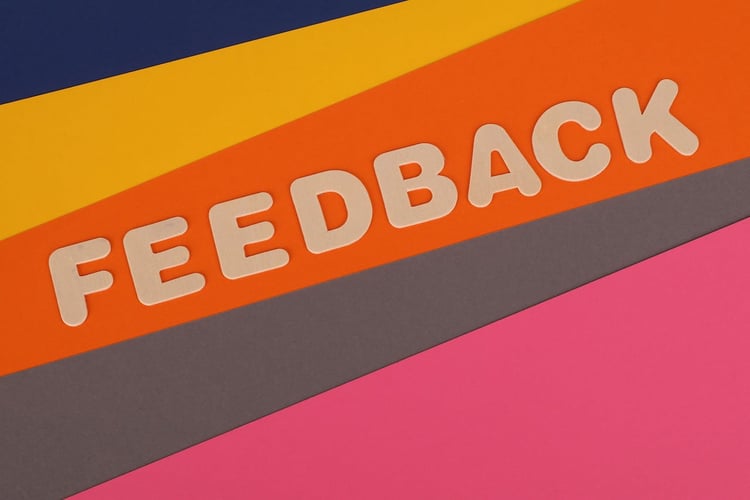4 Ways to Make Continual Feedback Part of Your Company’s Practices

By Lucy Rowell, Founder of Impactful Authority
How do you feel about giving and receiving feedback? Do your palms start to sweat, your heart beats a little faster and you can’t escape the negative thoughts circling in your head? Or are you one of the lucky people who start to feel energised, motivated, and curious about what’s ahead?
I was most certainly in camp 1, but after being exposed to the benefits that were unlocked both in myself and the team I was working with, I soon started to see a shift in my mindset and approach to building teams and systems that allow for more continual feedback loops to emerge.
If you’re wondering what’s the benefit of continual feedback, here are three:
- If feedback is given in the right way, people feel a sense of belonging, knowing someone has their back and wants to push them towards the best version of themselves.
- Productivityrises as teams feel real ownership of what they are collectively delivering.
- Innovation. People are not afraid to speak up, share their ideas and refine other ideas. In this safe space, people can create and iterate through ideas quickly and effectively. This means innovation has more opportunity to be sparked.
If you know the opportunities that are unlocked but are still struggling to make this standard practice, don’t worry, I’ve been through a number of years thinking the same thing myself.
HERE ARE 4 TIPS TO USE TO TRANSITION PEOPLE INTO A NEW FEEDBACK STYLE.
- BE CLEAR ON THE WHY
Explain, explain and then explain again the ‘Why’.
Why are we doing this? What benefits are there for individuals? What outcomes is this going to help the team or company achieve?
Address the questions you anticipate in advance and respond to the unexpected ones. If you can paint a clear win:win:win, people are going to be excited to give it a try even if they are nervous to start.
- CREATE A SAFE SPACE
For many, this is going to feel uncomfortable to start with. So, you need to understand what is going to make different individuals feel safe. This is likely to require you and others ahead of the curve to be able to stand up and show some vulnerability and be the role model you want others to follow.
One quick feedback practice that works well is to share 2 things you love and 1 thing to consider for improvement. Having a simple formula like this can also make it consistent across teams/functions and feel like a new cultural practice the whole company is embarking on. You can also take this approach both on and offline, which I love!
- BE FLEXIBLE
As with all change, there will be different levels of speed of adoption. Make sure that the ‘Why’ message carries on being repeated, continual training and support is provided for those slower to embrace change and that you are open to listening to feedback. This also shows the continual feedback culture living and breathing in itself.
- SHARE POSITIVE STORIES
Whether it be about products, processes or people, positivity breeds positivity. I often share my own story about the importance of words. It wasn’t until I had my first coach feedback to me that I used the word “try” a lot that I realised I wasn’t always making the commitment to things. Now I often catch myself before I use this word and swap it for a clear Yes or No. This has helped me and others I work with dramatically.
Good luck on your journey and in the spirit of feedback. If you have feedback on this article or others I’ve written, I’m excited to receive it.
About the Author
Lucy Rowell is a coach, consultant and podcast host. She works with individuals and teams in corporate organisations who currently feel stuck or held back by the challenges in front of them, catalysing them to power up their authenticity, increase their impact and realise their potential.
Lucy has over 20 years in senior leadership roles within the area of Data Science, Commercial and Research & Development in global corporate organisations. Previously, she was the chairwoman for a large non-profit company, PSI. She has designed and implemented a number of innovative large team/organisational transformations and enjoys the challenges transformation brings.




